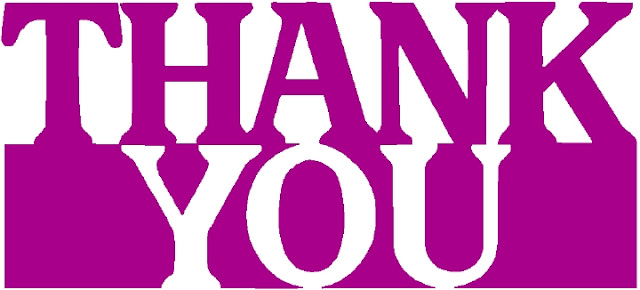Impressions of Memes – Kashif Nadim Chaudry
(Djanogly Art Gallery – Lakeside Arts Centre, Nottingham
2012)
By Sooree Pillay
Upon entry, and as my eyes climb, what seems like a
geographical landscape is laid out before me, draped with rich red, green and burnt
golden cloths and married together in a stunning composition. Immediately I am
intrigued, delighted and invited. Behind, a monstrous beast, with its immense,
imposing architectural structure, shows a skeletal, almost prehistoric, and yet
religious form. The blood-like quality in the cloth, draped, as one might find
in many places of worship, we are led to its human face. So, then, forced to look
up, as if to a god, the visage is framed by its grotesque disease-ridden bust.
It draws us in, yet we are simultaneously repulsed. As it is written, those “…themes of loss,
death and decay, the unsettling merger of beauty with the grotesque, failed
authority and dilapidated monumentality”1 come to mind. This is Memes by Kashif Nadim Chaudry.
Moving into the second “third”2 liminal space,
one is surprised by gigantic prayer beads covered in hair, and headed by a
many-faced monster, delicately mounted on arabesque, dripping finely, hand-
crafted textile. We are fascinated, and encouraged to ponder what it all means.
Drawing on my own references, I need to make sense of this, gently led by
suggestion in Chaudry’s work. Giant hairy
testicles, adorned with beautiful flowers, and expelling bright red ropes,
which vaguely remind me of a religious belt, I smile yet reproach myself at the
same time. One cannot but agree that Chaudry encourages that dream-like3 ambiguity between his proposal and our
interpretation. The oozing, glistening blue below the sticky, revolting chicken
heads, makes me think of a tumorous umbilical cord, once again, tempting me to
question where we lie between an image
and our decoding of it. All of our narratives are brought into play, allowing
us to wander from our definitions of the world, to how we have formed them. Meanwhile the frozen poultry seems to be still
watching me. I feel uncomfortable being in such close proximity, so, having
gone full circle, I am pushed into the third room...
A hideous, menacing claw behind a sunken animal skull, its
body robed in, what could be a shawl, referring to the wedding dais imagery of
previous work4, and placed over the bony shoulders of this skinny
giant. Here we see, though not a monument, true to the original meaning of the
word, this kinetic beast does give us a sense of foreboding and danger, as well
as curiosity as to the significance of the claw and its function as a mechanism
to dump hair in the other, empty space. It leaves a trail, reminiscent of horse
excrement. An impressive sight,
unfortunately I am unable to see the beast in action today. I look to my right
and am shocked to re-encounter chickens heads, now on spikes, as though
strangled by the copper metal that is entwined around their necks. The network of contradictory imagery here, as
in the whole piece, draws on, and is dependent on the imagination of the
viewer. The juxtaposition of beautifully crafted textile, with dry bone, and a
sense of emptiness reinforced by the harshness of the lighting, casting sharp
shadows on the spaces that are found within, is chilling and dark. The shadows
resemble the bars of a prison, as though referring to some ritualistic incarceration.
The copper continues to brilliantly shine as if also decorating the dead
chickens that carry them. One might think indeed that the chickens laugh at
their victim. I am left confused yet enchanted in some perverse and grotesque
way. Again, the work here has a nightmarish quality. Chaudry gives our minds
the wings to fly, though uncomfortably pausing from time to time to try and
reason with ourselves. Perhaps this
refers to the guilt legacy that forms such an integral part of much formalised
religion. Why do we see such beauty in the grotesque, or perhaps it never was
grotesque in the first place? We are
found in that “in-between space at the cutting edge of translation and
negotiation’ where boundaries blur, identities crisscross, and new
possibilities emerge”5. I am
left with the need for time to mull over it all; I cannot decide anything in
the here and now.
A true craftsman, Chaudry’s work creates a sense of mystery
and magic that is beautifully theatrical. I am mesmerised, and deeply touched,
but I cannot pinpoint exactly why. Perhaps because Memes penetrates down to the bone, and in exploring my essence, as I
engage with each intricately detailed element, the experience is wonderfully
sensory. I am liberated to think the unthinkable, and quietly create a
discourse with myself. As I leave the gallery, I can understand the references that
Chaudry makes to his own journey, but I have walked with him, peeling back the
layers of my own past, examining them now, and immediately it transforms my
future.
References:
1
Roshan das Nair (2012) – Memes-Designing Dowries for the self: the
practice of Kashif Nadim Chaudry, pub.
Djanogly Art Gallery 2012, p9.
2
Homi K Bhaba’s ‘third space’
3
Roshan das Nair refers to the psychoanalytic concept of dreamwork, where “while the objective is to explore the images and
emotions evoked in the individual to produce the manifest dream, this is done
without attempting to come up with a single, definitive meaning.” - Memes-Designing
Dowries for the self: the practice of Kashif Nadim Chaudry, pub. Djanogly
Art Gallery 2012
4
Particularly noted in Even the Animals 2010 – New
Art Exchange, Nottingham
5
Roshan das Nair (2012) – Memes-Designing Dowries for the self: the practice of Kashif Nadim
Chaudry, pub. Djanogly Art Gallery 2012, p.5.
























